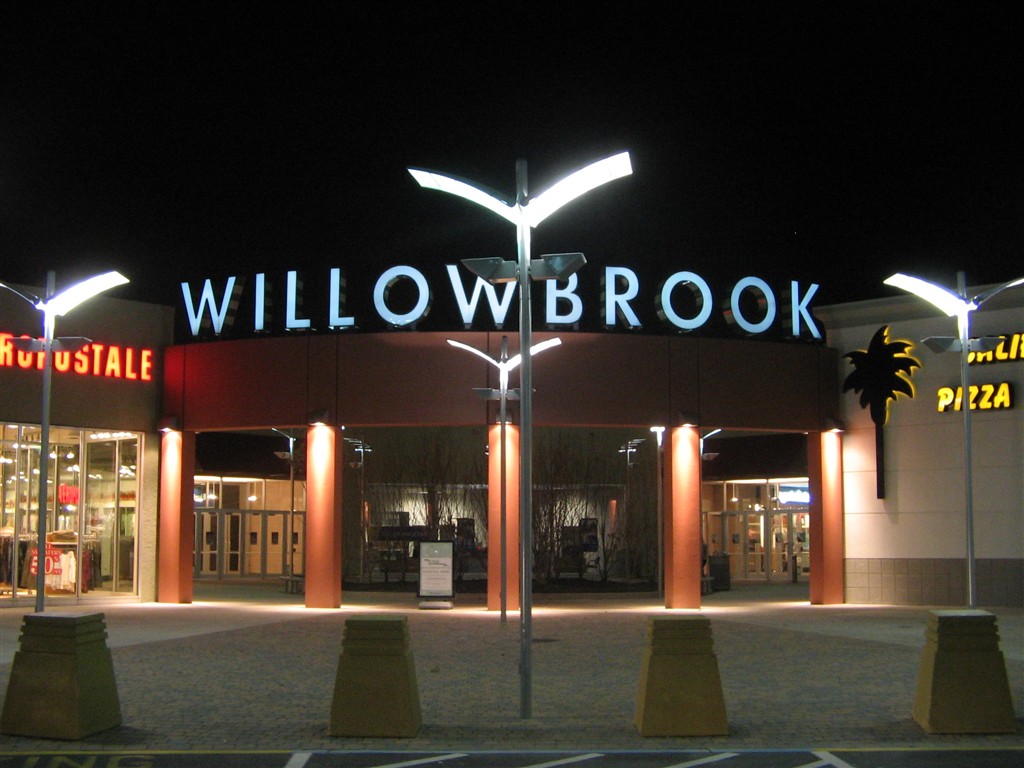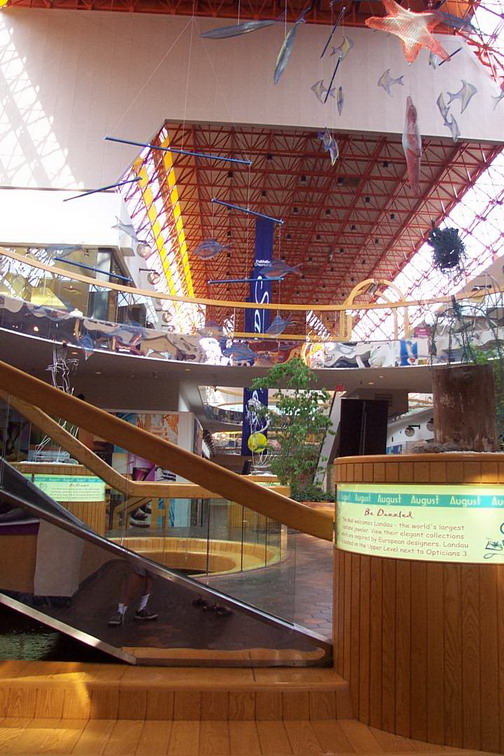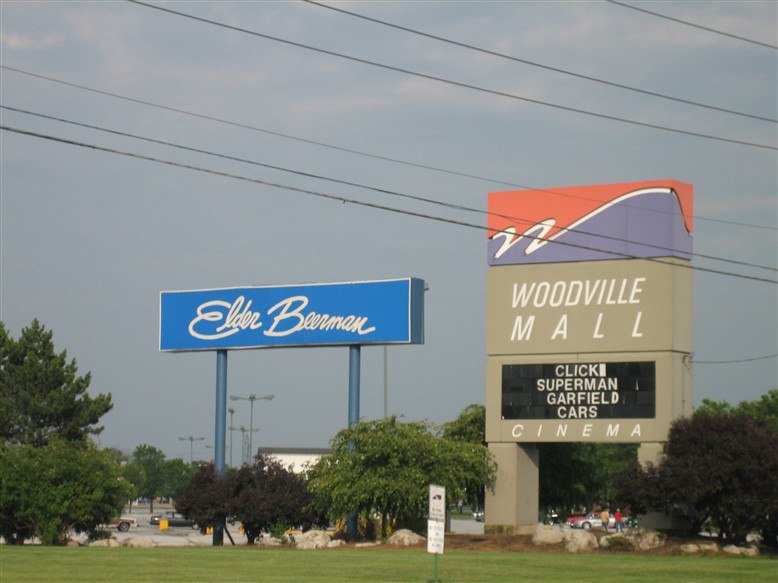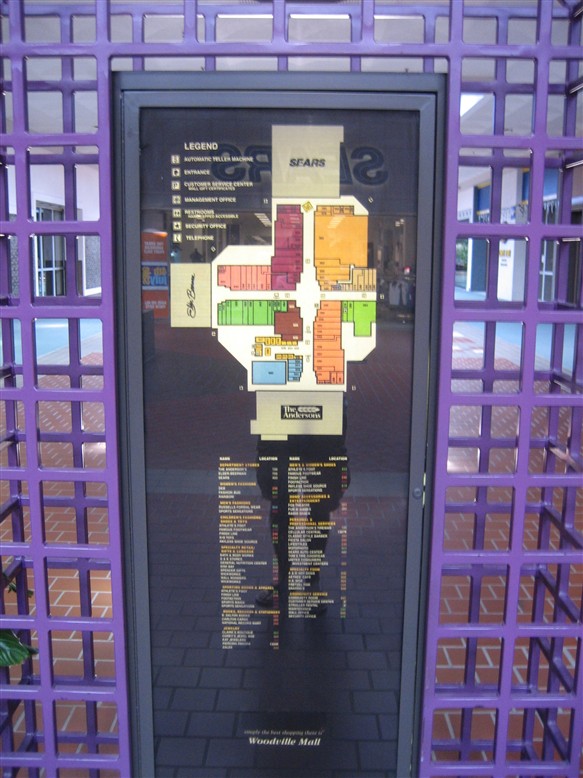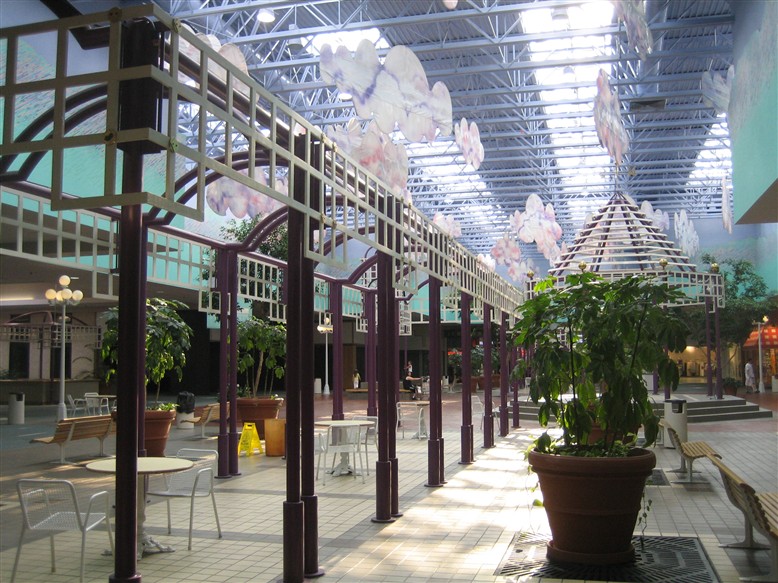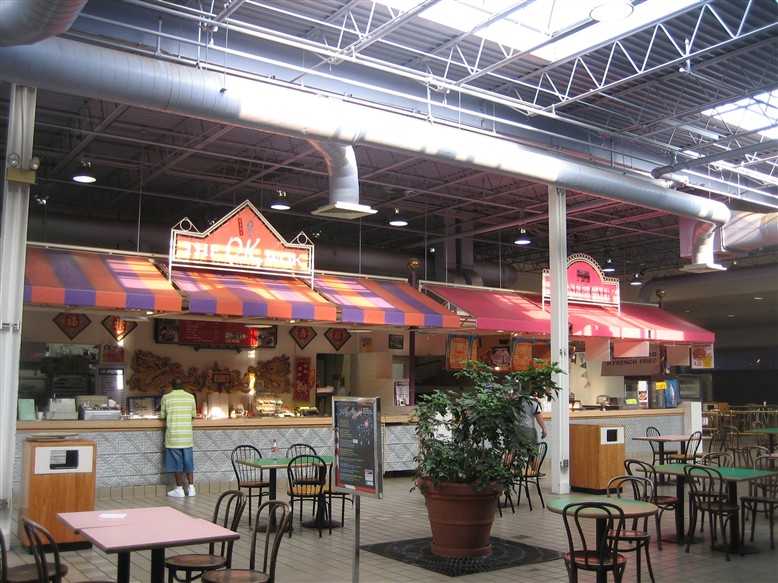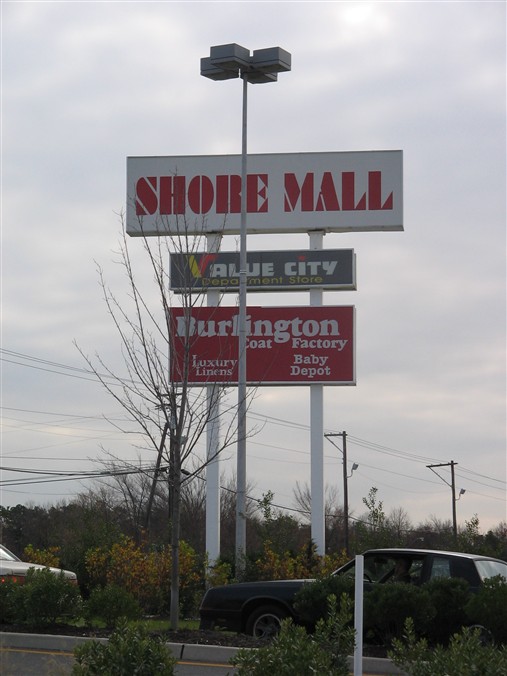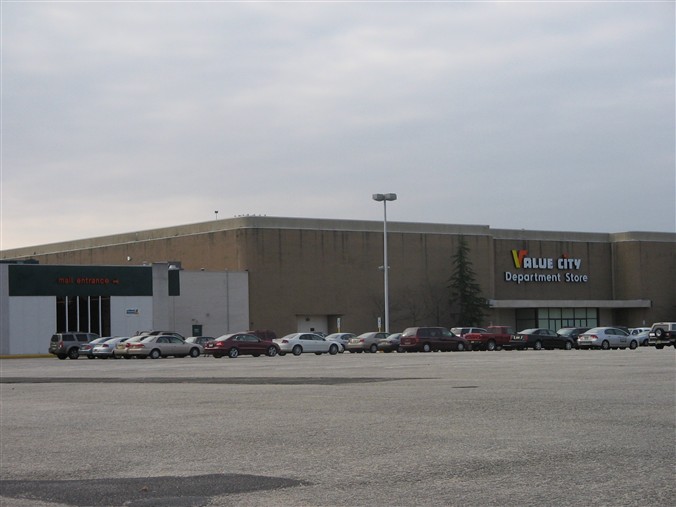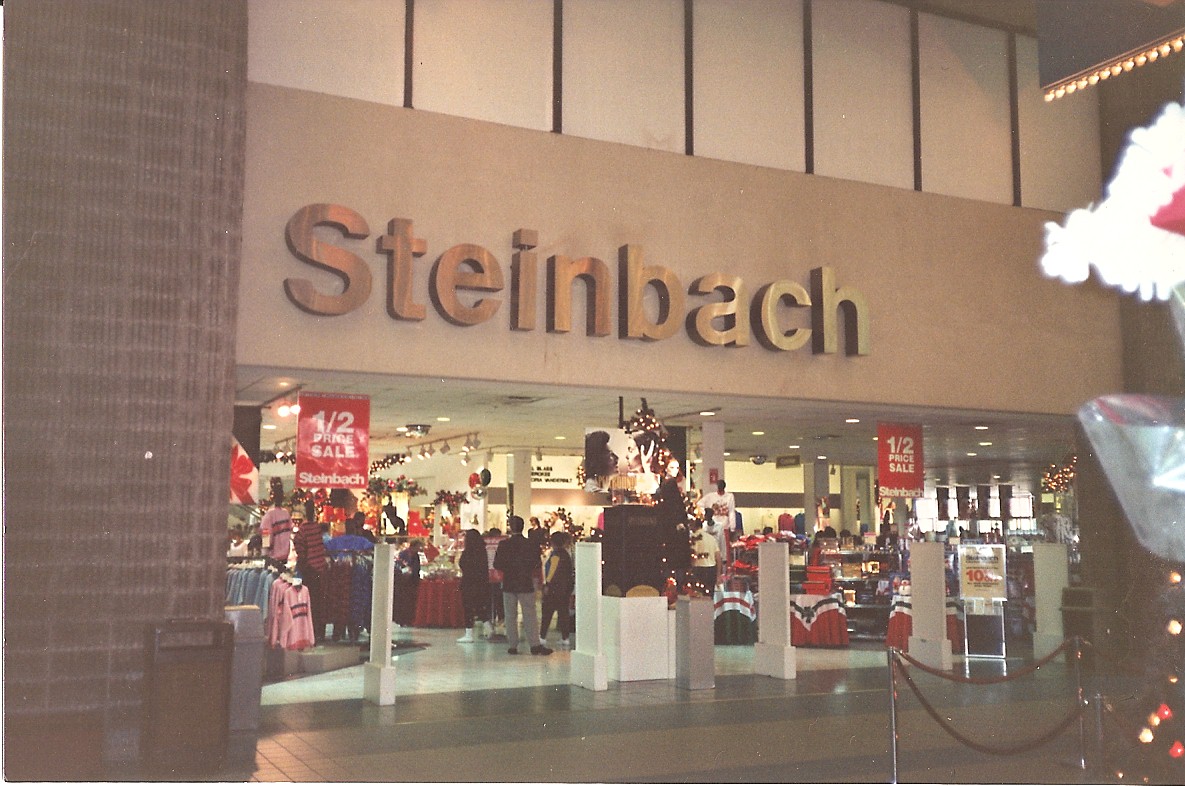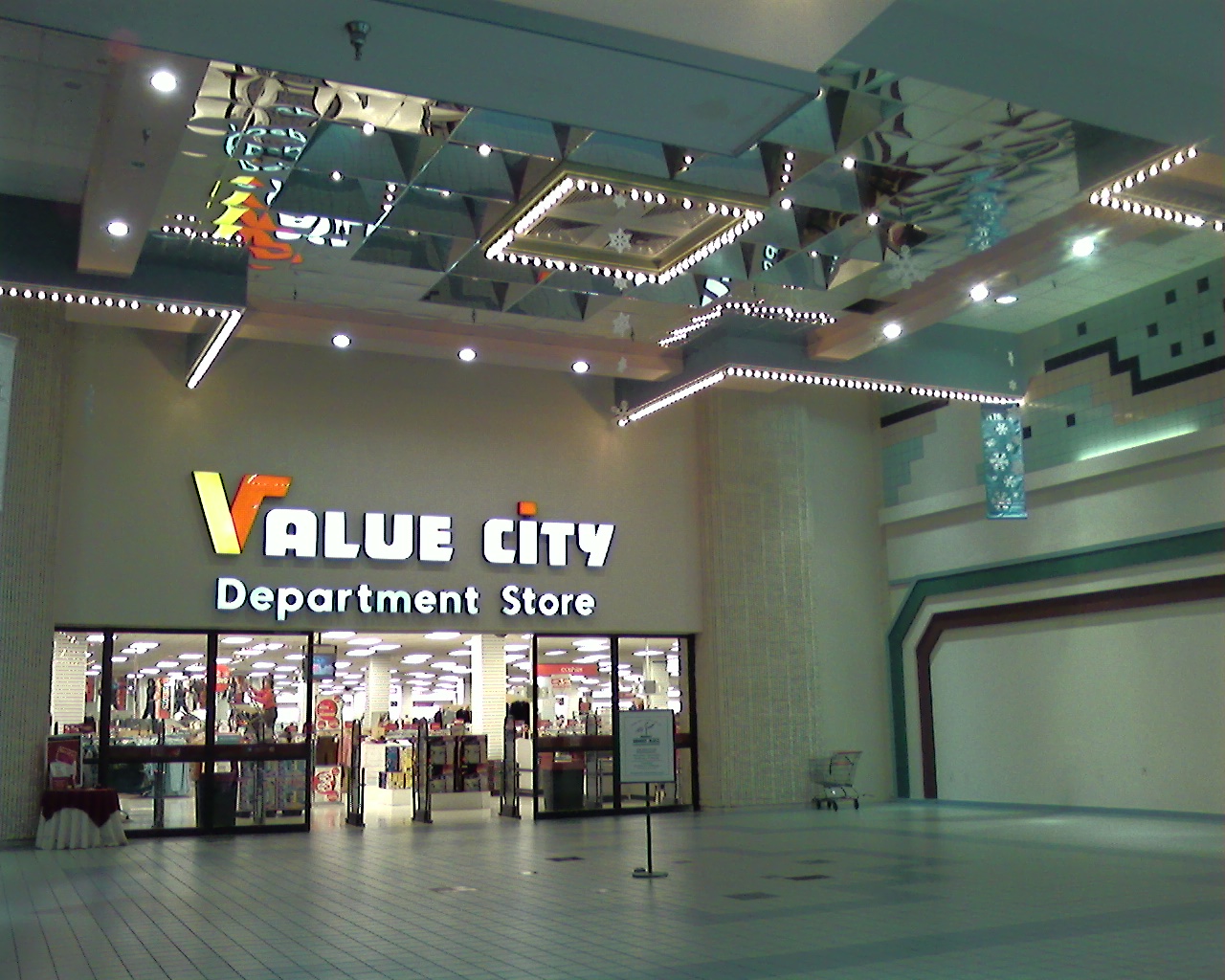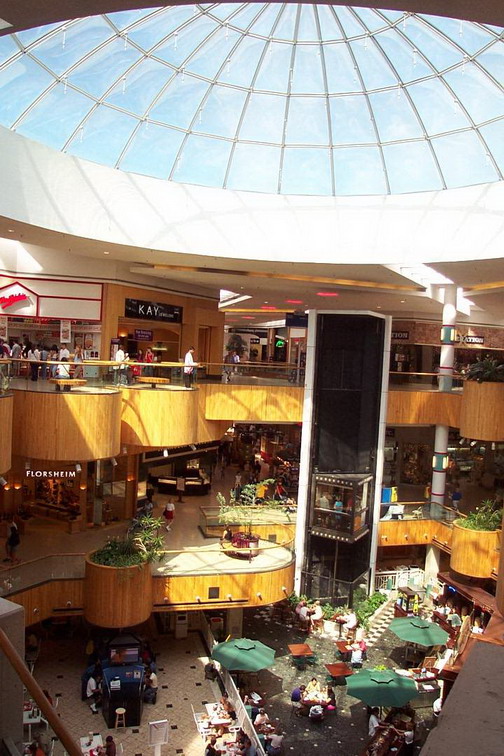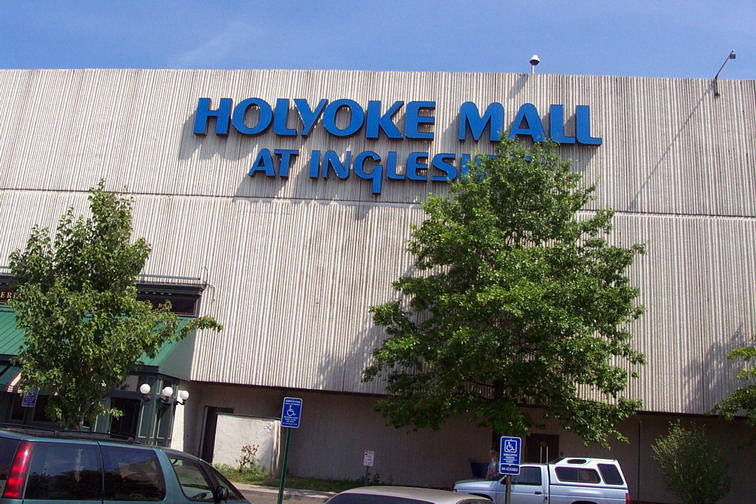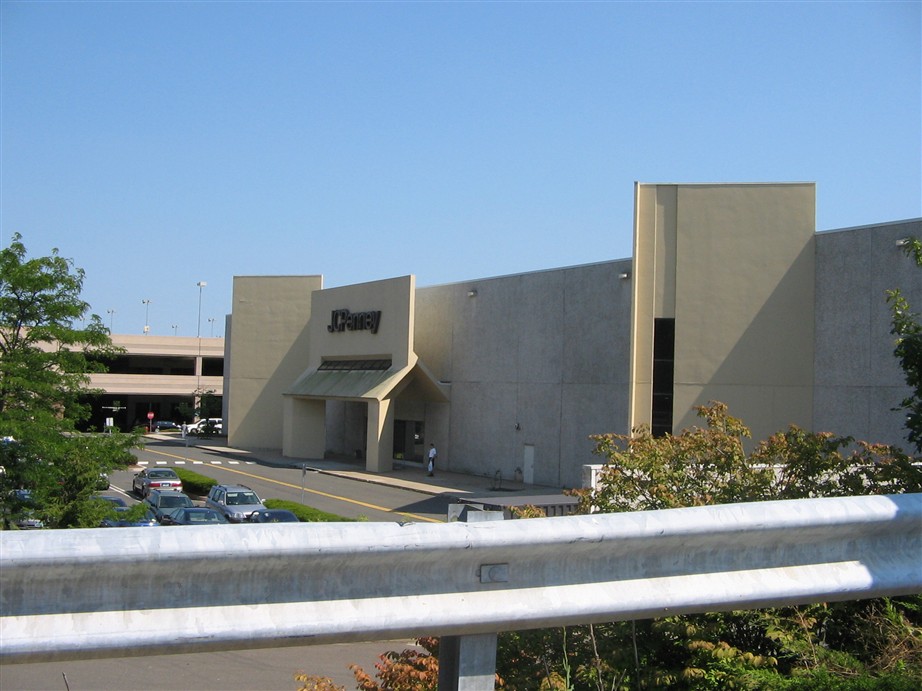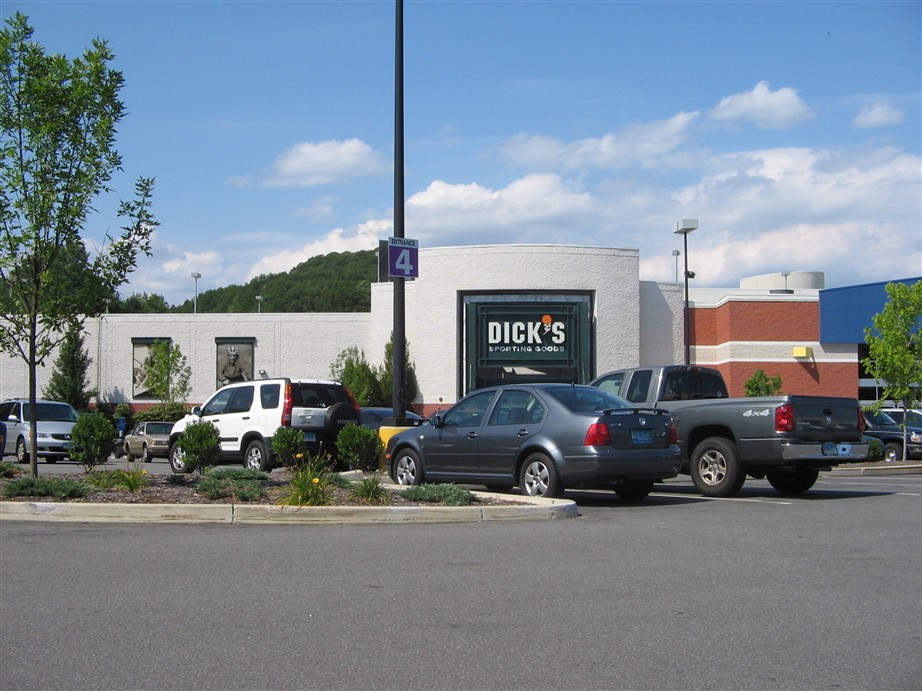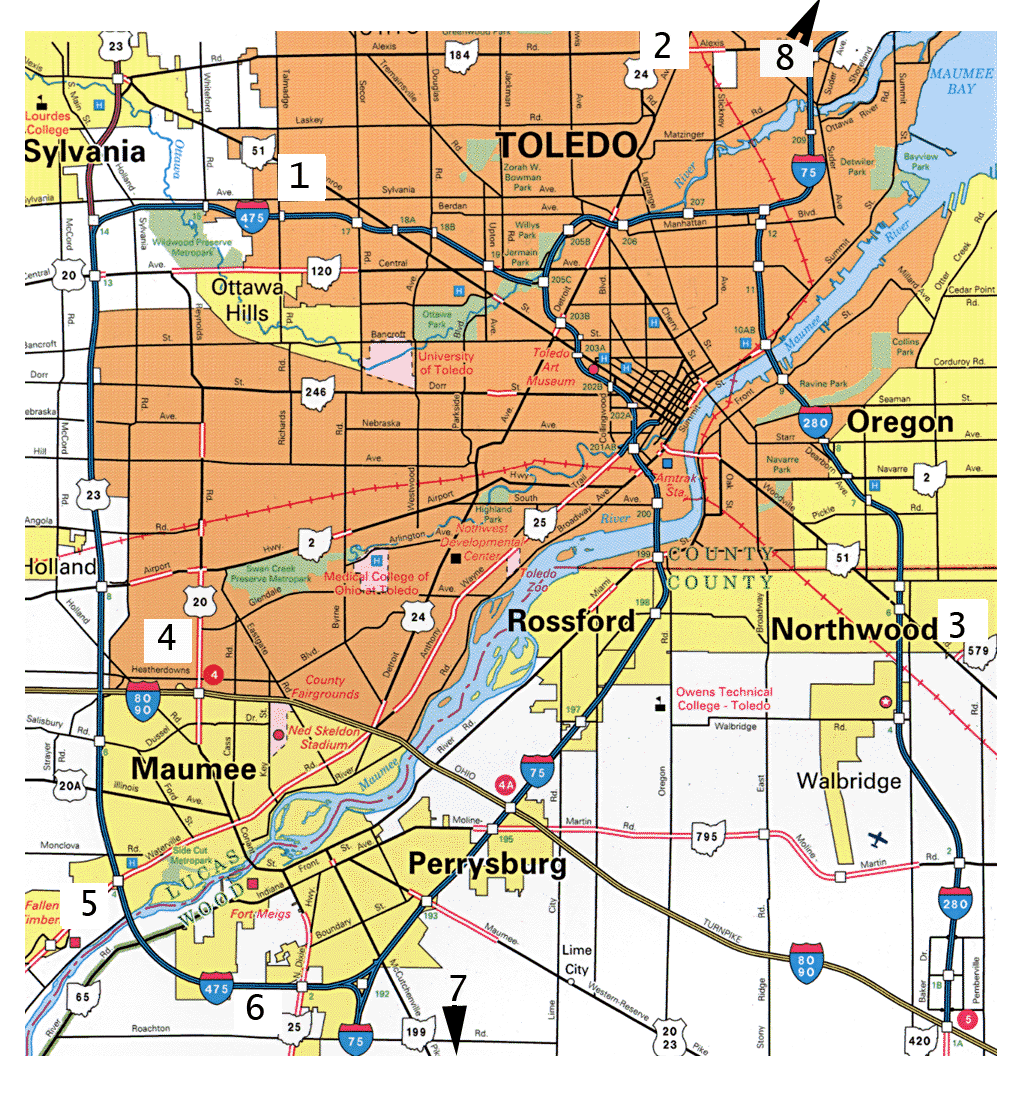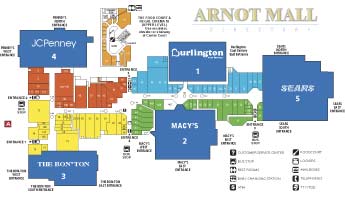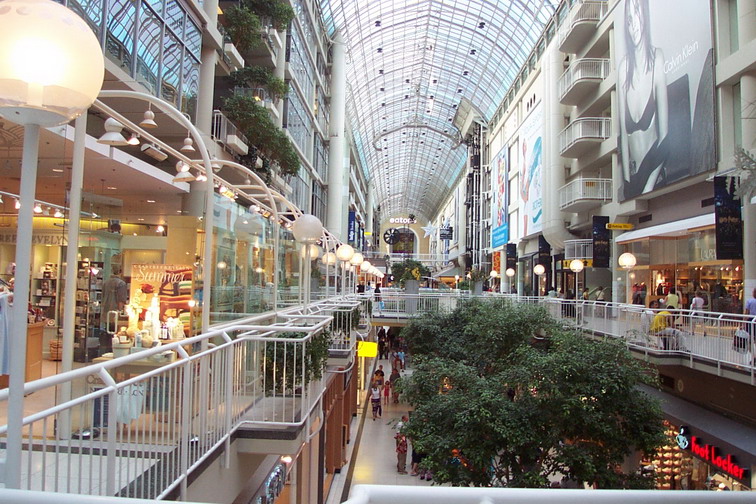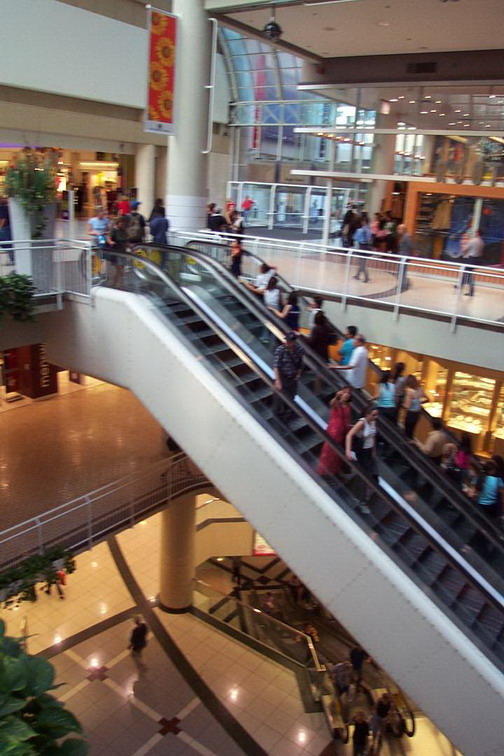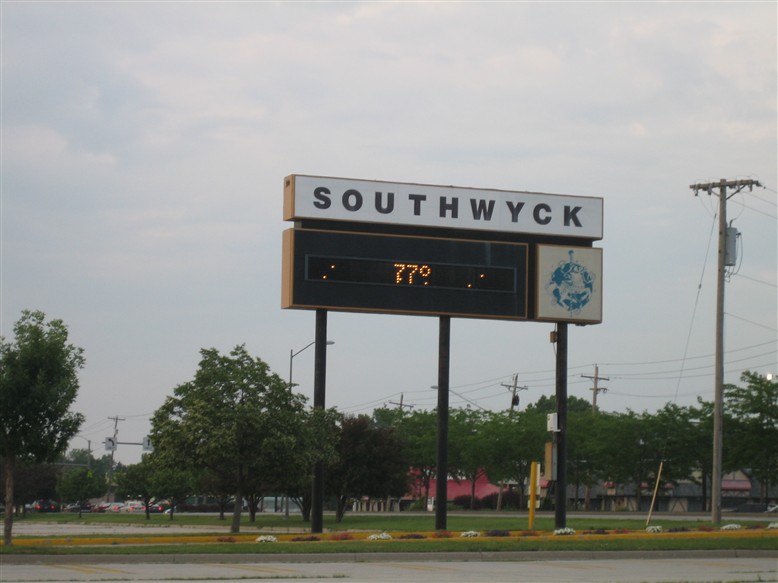
There are many reasons enclosed malls fail. Competition, changing demographics, poor management, anchor woes, and strategic location are all reasons for a downward swing. Southwyck Mall in Toledo, Ohio is a rather unique tale of failure in that all of these devices contributed to its eventual demise, one after another. What began as a popular hub of retail activity eventually became, through these devices of failure, a dead mall museum. Still open for business as of the date of this article (November 2006), Southwyck’s days as a viable enclosed mall have definitely passed and its days of being open for business at all are numbered as well.
 Opening in 1972 to immediate success, Southwyck was one of four major enclosed malls in Toledo. Once a thriving mecca for shoppers from the surrounding areas of Toledo and beyond, Southwyck has lately fallen into disrepair. The decor of the center is very dated, yet it seems at least one renovation has taken place since the 1972 opening; however, it was not recent. The grand center court is flanked by a beautiful carousel, under a very 1970s looking bubble ceiling which extends very high, yet has several dirty or discolored tiles. Decorative light fixtures throughout the center are an attempt to recreate an old English, perhaps Victorian, feel to Southwyck. Many of the storefronts, including the closed ones, are extremely dated. Beautiful fountains are still in operation throughout the mall but repairs seem necessary. The Montgomery Ward anchor, which was abandoned in 2001 with the chain’s closure, remains fully signed on the inside and out. Another interesting decor element of Southwyck was the haphazard, somewhat random placement of very colorful kites, some with very long streamers, placed throughout the mall along the ceiling. However, the most interesting feature of Southwyck to me were the directories. Each directory is a kiosk made up of at least one television, displaying one of two things. Some displayed early 1980s-looking computer graphics listing the store directory and mall happenings directly on the TV, while other televisions were broadcasting CNN live or Channel 24, the local NBC affiliate for Toledo.
Opening in 1972 to immediate success, Southwyck was one of four major enclosed malls in Toledo. Once a thriving mecca for shoppers from the surrounding areas of Toledo and beyond, Southwyck has lately fallen into disrepair. The decor of the center is very dated, yet it seems at least one renovation has taken place since the 1972 opening; however, it was not recent. The grand center court is flanked by a beautiful carousel, under a very 1970s looking bubble ceiling which extends very high, yet has several dirty or discolored tiles. Decorative light fixtures throughout the center are an attempt to recreate an old English, perhaps Victorian, feel to Southwyck. Many of the storefronts, including the closed ones, are extremely dated. Beautiful fountains are still in operation throughout the mall but repairs seem necessary. The Montgomery Ward anchor, which was abandoned in 2001 with the chain’s closure, remains fully signed on the inside and out. Another interesting decor element of Southwyck was the haphazard, somewhat random placement of very colorful kites, some with very long streamers, placed throughout the mall along the ceiling. However, the most interesting feature of Southwyck to me were the directories. Each directory is a kiosk made up of at least one television, displaying one of two things. Some displayed early 1980s-looking computer graphics listing the store directory and mall happenings directly on the TV, while other televisions were broadcasting CNN live or Channel 24, the local NBC affiliate for Toledo.
There were originally three anchors to Southwyck. From the south to north, they were: Montgomery Ward, LaSalle, and Lion. LaSalle and Lion were Toledo-area department stores and as was the case for many malls across America, they made the trek from downtown to the enclosed malls when they opened to try to get a piece of the action. LaSalle folded in the early 1980s and Southwyck’s middle anchor became Lion’s Store for the Home. Lion, Southwyck’s northern anchor, held on under the helm of Mercantile Stores until 1998 when it was sold and converted to Dillard’s along with the middle anchor Home Store. In 2001, Southwyck experienced its first anchor closure as the Montgomery Ward chain folded. In 2003, the middle anchor space also became empty as Dillard’s closed the Home Store. Dillard’s does, however, continue to operate as the south anchor at Southwyck and owns a great deal of the mall itself; however, in 2007 Dillard’s plans to open a new location in a 1 million square-foot lifestyle center called Fallen Timbers only a few miles from their current location at Southwyck. What will become of the embattled, beleagured Southwyck in the near future is anyone’s guess as the mall’s owners, developers, and the city of Toledo evolve their decisions.
But it wasn’t always this way. From when it opened until at least through the 1990s, Southwyck was a viable retail center with three full-sized anchors and one mllion square feet of retail space that was mostly full. Within this decade, however, the bottom fell out as several devices of failure worked on Southwyck and hollowed it out to a shell of its former self. First, the closure of Montgomery Ward in 2001 left a gaping hole at the south end of the mall. This wasn’t the mall’s fault, per se, as Montgomery Ward closed all their stores at that time. Although the mall initially held its own after the closure, just two years later in 2003 the middle anchor, Dillard’s for the Home, closed. This left only Dillard’s, the north anchor, remaining. In addition to suddenly losing anchors, the mall’s vacancy rate also increased rapidly since 2000. Prior to 2000, the mall was basically holding its own and hopeful for a revival.
Such a revival was proposed in 2002. As Montgomery Ward shut its doors in 2001 and stores started leaving with it, Toledo Councilman Rob Ludeman proposed giving Southwyck enterprise zone status in order to lure stores with loans and tax abatements. In addition, Toledo mayor Jack Ford attempted to woo anchors and retailers away from the proposed Fallen Timbers development, specifically Sears in 2002. Also, in 2003 Westfield America expressed interest in purchasing the mall and redeveloping it. Unfortunately, as with all efforts to redevelop Southwyck, nothing came to fruition.
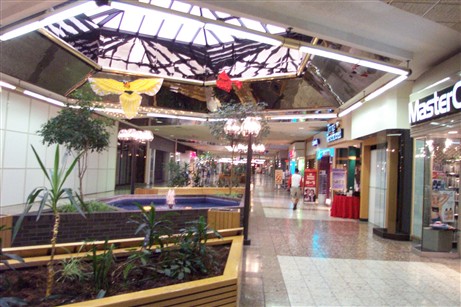 What else went wrong? Poor management has plagued a successful revival for the struggling Southwyck for at least the past several years and the owners can’t be spared some of the fault. Southwyck is currently owned partly by Sherman Dreiseszun, a curious Kansas City businessman who currently owns stake in several beleagured shopping malls across the country, and partly by Dillard’s, the lone anchor left in the mall. Both entities have allowed Southwyck to falter and have failed to provide updates or renovations of any kind to the mall in the past several years, causing shoppers and therefore stores to flee. In early 2005, the city of Toledo set a deadline of March 1, 2005 for the owners of Southwyck to get their act together and secure a path to renovation or they would take further steps to intervene and do whatever it takes to make Southwyck viable, somehow.
What else went wrong? Poor management has plagued a successful revival for the struggling Southwyck for at least the past several years and the owners can’t be spared some of the fault. Southwyck is currently owned partly by Sherman Dreiseszun, a curious Kansas City businessman who currently owns stake in several beleagured shopping malls across the country, and partly by Dillard’s, the lone anchor left in the mall. Both entities have allowed Southwyck to falter and have failed to provide updates or renovations of any kind to the mall in the past several years, causing shoppers and therefore stores to flee. In early 2005, the city of Toledo set a deadline of March 1, 2005 for the owners of Southwyck to get their act together and secure a path to renovation or they would take further steps to intervene and do whatever it takes to make Southwyck viable, somehow.
In July 2005 the owners of Southwyck announced they had hired local developer Larry Dillin, responsible for opening nearby lifestyle center Levis Commons, to head up the redevelopment for Southwyck. By November, Dillin announced his plans. In a massive renovation, the current enclosed mall would be demolished and in its place, a lifestyle center would essentially be put in place with 2 anchor stores, 4 box stores, a number of smaller retail pads and restaurants, office space, and luxury apartments. In September of 2006, Dillin held a town meeting outlining progress since he announced his plans. He essentially said nothing had happened in terms of progress, but did reveal that Dillard’s is committed to retaining a full-service store at Southwyck and will not leave for the new Fallen Timbers development. 
As of November 2006, another roadblock has presented itself in terms of funding from the city of Toledo, which is necessary for redevelopment to occur. The mayor of Toledo has redirected the funds marked for Southwyck redevelopment toward a different redevelopment in downtown Toledo. However, current mayor Carty Finkbeiner promised the money would be back in the budget in 2007.
Now that we’re up to date, let’s bring it all together. Southwyck’s failure was originally caused by anchor woes and poor management. Despite being in a strategic location amid other successful retail along a popular retail corridor in south Toledo, Southwyck has never renovated or repositioned itself to become attractive to shoppers as Toledo’s only successful mall Franklin Park has. In addition, several failed attempts at renovation in the past few years were thwarted by competition from a nearby 1 million square foot outdoor mall opening next year, and a large lifestyle center which opened last year and continues to expand. In 2005, the city of Toledo stepped in on official terms and demanded that redevelopment of the near-blighted property commence as soon as possible, coercing the owners to hire a local developer. In an ironic twist, the developer is also the developer responsible for one of the lifestyle centers and part of Southwyck’s competition. The developer drafted extensive plans for renovation, but the stimulus seems to be lacking for getting started on the project. Some questions to consider: Why are 2 new developments totalling 1.5 million square feet of retail space being built when Southwyck and 2 other Toledo-area malls have failed? Why did the city step in to aid redevelopment, only to abandon ship and redistribute the funds for redevelopment to another project? And lastly, will redevelopment ever occur, or will Southwyck simply die off and close up like so many other malls?
Below are some photos of Southwyck taken during Summer 2005. As usual, feel free to add your own thoughts on this complicated and contentious story.
UPDATE 11/28/07: Last month, the final anchor at Southwyck, Dillards, packed up and moved to newer digs in a “Lifestyle Center” called the Shops at Fallen Timbers in nearby Maumee. Meanwhile, the city of Toledo is still attempting to purchase the entirety of Southwyck for re-development. According to the Toledo Blade, the lag time for re-development is due to the odd way in which the mall is owned. The city recently negotiated a purchase price for the recently vacated Dillards store, which is owned by a Texas firm, but because the rest of the mall is owned 50/50 by Dillards (ironically) and a Kansas City partnership, the city must negotiate with each party separately. And, it seems Dillards, which never owned its original store at the mall to begin with, has been unwilling to agree on a purchase price with would-be redeveloper Larry Dillin. Interesting stuff, and we’ll keep an eye on it. But for now, without an anchor the mall will fast become a sinking ship. How many stores are even operating inside?
UPDATE 2/8/08: The following editorial appeared in the Toledo Blade, and I couldn’t agree more:
Article published Thursday, January 24, 2008Be involved in future of Southwyck On a recent outing to the Shops at Fallen Timbers, I conducted an unofficial poll of the “unique shopping experience” offered by this mall.
I approached a number of people to ask for their opinion of the new shopping mall, and received pretty much the same response from all those I questioned: “I hate it, I prefer indoor malls, it’s too cold and windy to have to go from store to store outdoors, put on my coat, take it off, etc.”
A while back, I attended a neighborhood meeting at which developer Larry Dillin gave a presentation on the future of Southwyck Shopping Center. Mr. Dillin brought with him the artist’s rendition of what Southwyck would look like once he gets his hands on the property. I asked how he came up with his statistics about outdoor malls, why we need them, and why he eagerly promotes them. I recall Mr. Dillin responding that “indoor malls are a thing of the past.” Where did Mr. Dillin get his information? Has anyone taken the time to conduct a survey of the residents of Toledo?
I believe it to be in the best interest of Southwyck-area residents to be involved in Southwyck’s future and not leave it up to some developer who has a distorted vision of what he thinks is best for the area. Southwyck could once again draw shoppers if anchor tenants could be enticed by lower rent, promoting the conveniences of indoor shopping vs. outdoor malls.
If indoor malls are a thing of the past as Mr. Dillin claimed, why is Westfield Franklin Park expanding again? Are we going to sit idle and allow Southwyck to fall under the wrecking ball?
James H. Marshall
UPDATE 5/13/2008: On May 8, the city of Toledo issued a notice to Southwyck owners that they had 72 hours to clean up toxic black mold and potential asbestos contamination, or the city would close the mall on May 12. As a response, the owners stepped up and replaced the mold tiles, and put up a fire wall to seal off the asbestos in the former Montgomery Ward store. Mesothelioma anyone? It was also revealed that Southwyck currently has only 6 stores open, and that persistent developer Larry Dillin is still trying to buy the mall and will be marketing it at the International Council of Shopping Centers convention this year.
UPDATE 8/26/2008: Southwyck Mall officially closed June 30, 2008. The owners took care of the mold issues which kept the mall open for business a bit longer. According to Toledo’s mayor, both owners are on board and with the aid of an EPA loan for asbestos removal, the mall should be demolished by December 31, 2008. Developer Larry Dillin was also quoted recently as saying the development to replace Southwyck should be complete by 2010. Let’s not hold our breath.
UPDATE 1/4/2009: The three owners of Southwyck have finally agreed upon a demolition timetable. Demolition will start during the first quarter of this year (2009) and be complete by midsummer 2009. As of now, no plans for redevelopment have been solidified.
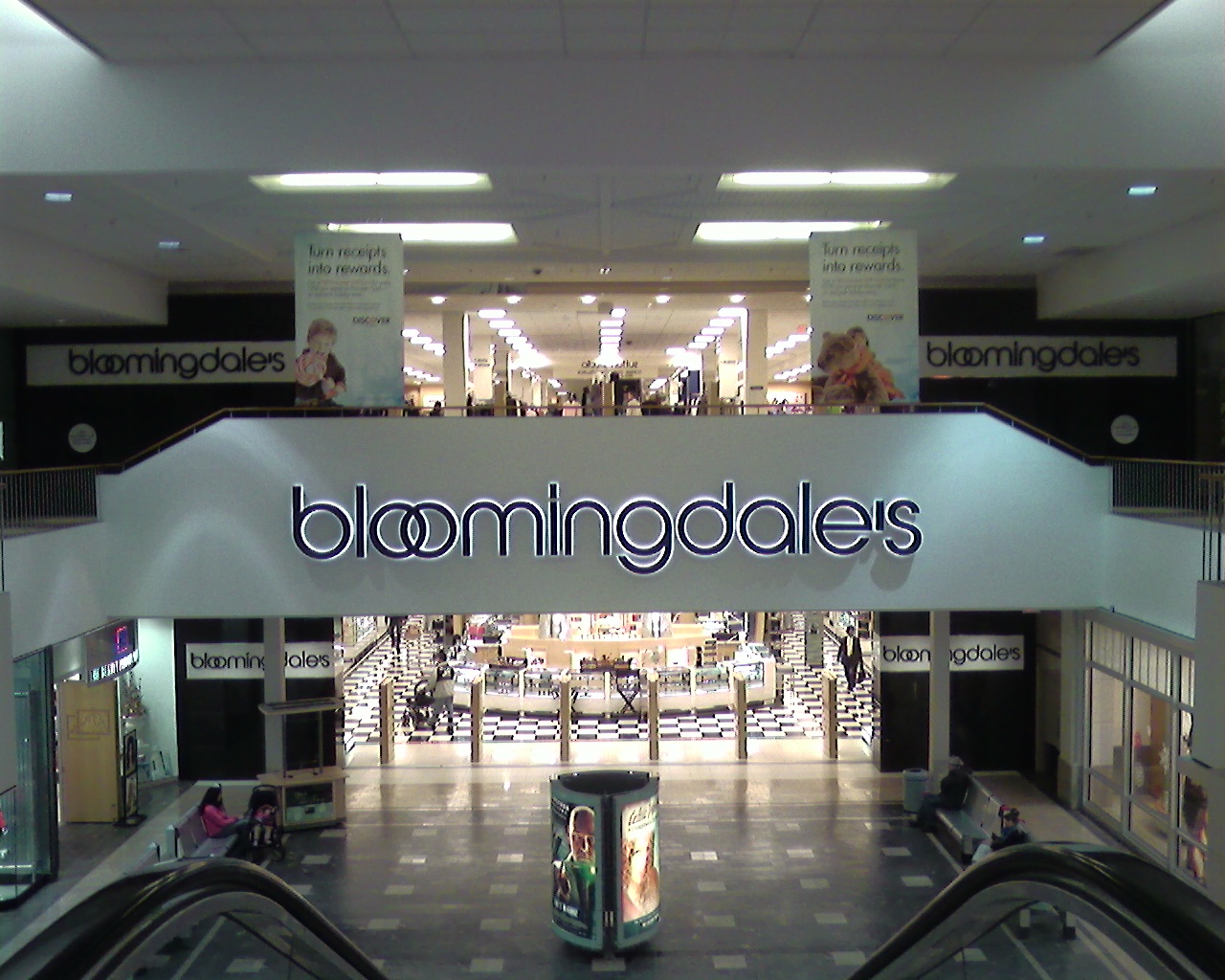 We’ve discussed a few of the malls in Paramus–New Jersey’s undisputed shopping hub–before. Not far to the west, however, lies Wayne, a major retail center of its own. Wayne is home to three enclosed shopping centers, the largest of which is the super-regional Willowbrook Mall, a General Growth Property located at the intersection of US 46, route 23, and interstate 80, just west of Paterson. The mall is the lynchpin of a major retail district that includes, among other things, a lawn ornament store made famous when a power-pop band–Fountains of Wayne–decided to name themselves after it. The 1.5 million square-foot Willowbrook, which is the second-largest mall in New Jersey, is so large that it even spawned its own mini-me in the Wayne Towne Center, a smaller enclosed mall located in its parking lot. Weird!
We’ve discussed a few of the malls in Paramus–New Jersey’s undisputed shopping hub–before. Not far to the west, however, lies Wayne, a major retail center of its own. Wayne is home to three enclosed shopping centers, the largest of which is the super-regional Willowbrook Mall, a General Growth Property located at the intersection of US 46, route 23, and interstate 80, just west of Paterson. The mall is the lynchpin of a major retail district that includes, among other things, a lawn ornament store made famous when a power-pop band–Fountains of Wayne–decided to name themselves after it. The 1.5 million square-foot Willowbrook, which is the second-largest mall in New Jersey, is so large that it even spawned its own mini-me in the Wayne Towne Center, a smaller enclosed mall located in its parking lot. Weird!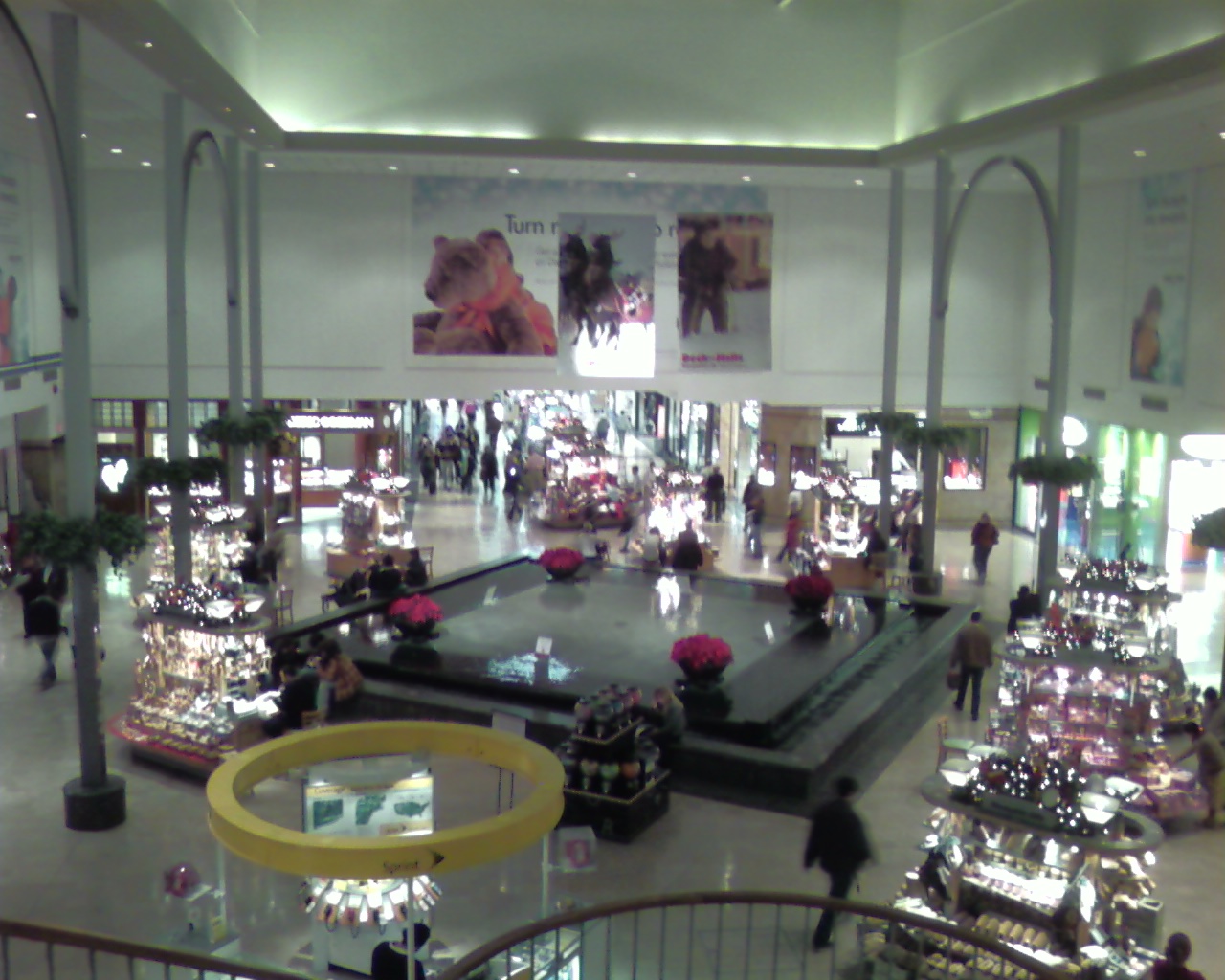 Willowbrook opened as a smaller mall anchored by Ohrbach’s and Sears in 1969, and was renovated and expanded in 1970 and 1988. The massive, grand Macy’s store seen here–which was originally constructed as a Bamberger’s–is an especially fine example of 1970s mall architecture, with its dramatic stone-walled facade (it’s too bad I had to photograph it at night). The 200+ store mall is a “T”-shaped, primarily one-level center, but one wing of the “T” (stretching between the center court and Bloomingdale’s) is two levels, and the mall’s grand center court, expansive fountain, and outdoor plazas are gorgeous remnants of another era. For some photos of what the Willowbrook Mall used to look like, check out these great shots (especially this one) at Malls of America.
Willowbrook opened as a smaller mall anchored by Ohrbach’s and Sears in 1969, and was renovated and expanded in 1970 and 1988. The massive, grand Macy’s store seen here–which was originally constructed as a Bamberger’s–is an especially fine example of 1970s mall architecture, with its dramatic stone-walled facade (it’s too bad I had to photograph it at night). The 200+ store mall is a “T”-shaped, primarily one-level center, but one wing of the “T” (stretching between the center court and Bloomingdale’s) is two levels, and the mall’s grand center court, expansive fountain, and outdoor plazas are gorgeous remnants of another era. For some photos of what the Willowbrook Mall used to look like, check out these great shots (especially this one) at Malls of America.